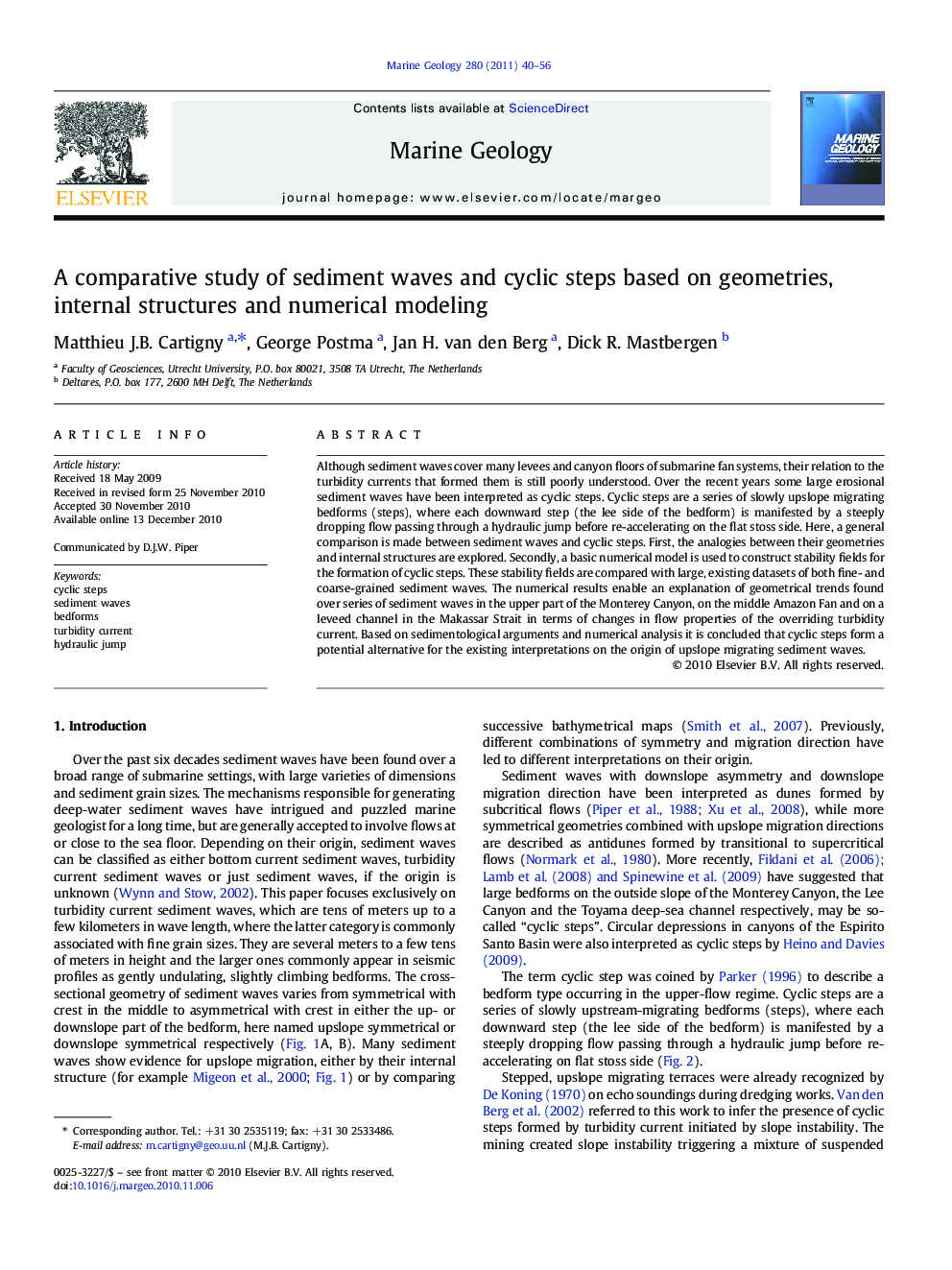| Article ID | Journal | Published Year | Pages | File Type |
|---|---|---|---|---|
| 6441847 | Marine Geology | 2011 | 17 Pages |
Abstract
Although sediment waves cover many levees and canyon floors of submarine fan systems, their relation to the turbidity currents that formed them is still poorly understood. Over the recent years some large erosional sediment waves have been interpreted as cyclic steps. Cyclic steps are a series of slowly upslope migrating bedforms (steps), where each downward step (the lee side of the bedform) is manifested by a steeply dropping flow passing through a hydraulic jump before re-accelerating on the flat stoss side. Here, a general comparison is made between sediment waves and cyclic steps. First, the analogies between their geometries and internal structures are explored. Secondly, a basic numerical model is used to construct stability fields for the formation of cyclic steps. These stability fields are compared with large, existing datasets of both fine- and coarse-grained sediment waves. The numerical results enable an explanation of geometrical trends found over series of sediment waves in the upper part of the Monterey Canyon, on the middle Amazon Fan and on a leveed channel in the Makassar Strait in terms of changes in flow properties of the overriding turbidity current. Based on sedimentological arguments and numerical analysis it is concluded that cyclic steps form a potential alternative for the existing interpretations on the origin of upslope migrating sediment waves.
Related Topics
Physical Sciences and Engineering
Earth and Planetary Sciences
Geochemistry and Petrology
Authors
Matthieu J.B. Cartigny, George Postma, Jan H. van den Berg, Dick R. Mastbergen,
